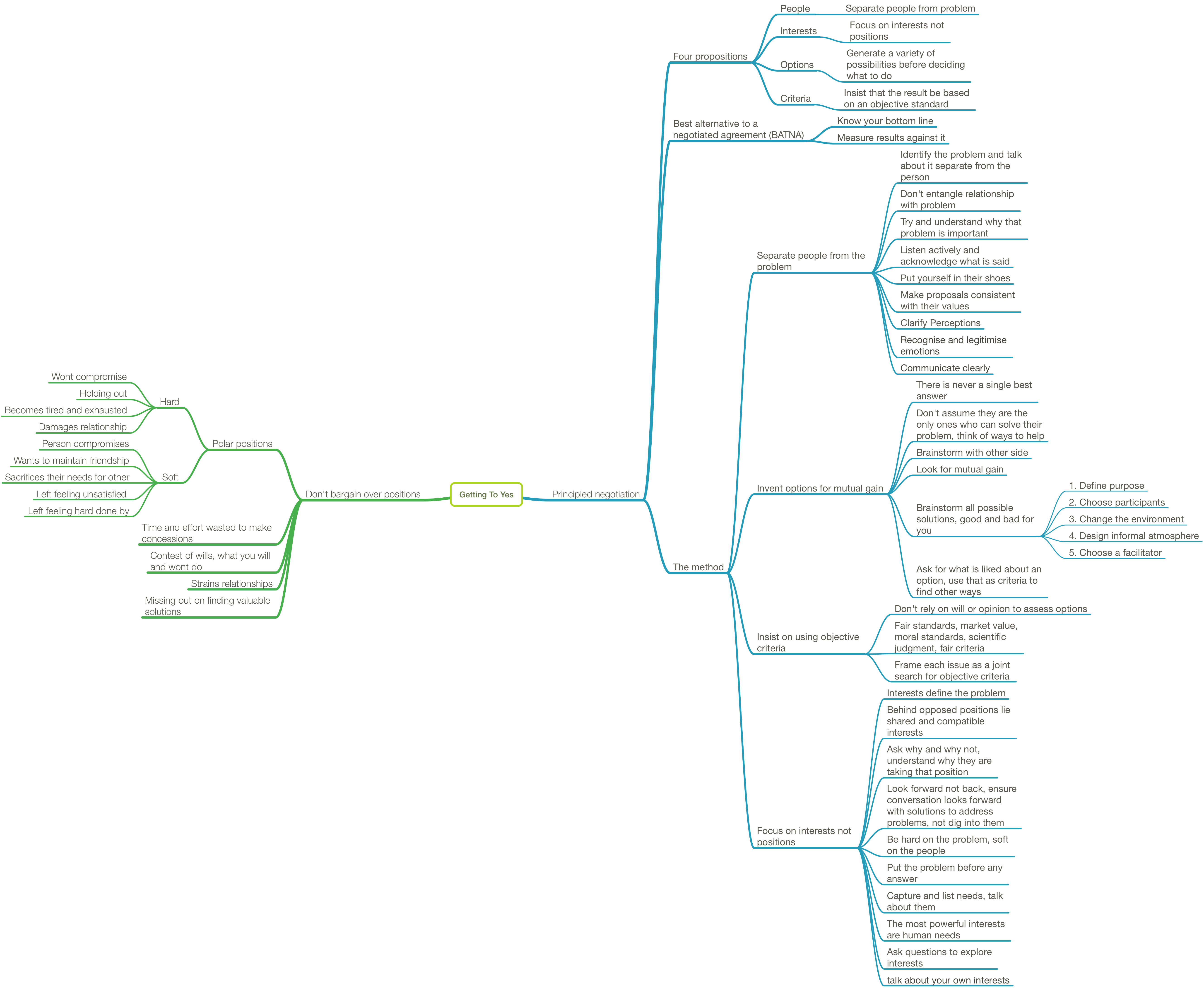The traditional form of negotiation follows the painful dance of both parties deciding what they want, stating what their position is and then making small compromises until both are happy with the agreed upon outcome. The problem with this form of negotiation is that inevitably leaves one party feeling hard done by and the other exhausted or guilty after the bending the other party to their will.
This traditional form of negotiation is known as "Negotiating over a Position". Once two parties have stated their positions, such as "I will not pay more than 20 dollars for this" and "this product will not be sold for less than $50". We have already backed ourselves into corners and have only given our counter party the information to argue over the number - rather than understand why we believe it is worth $20 or $50 dollars and what could be done to satisfy the underlying interests that are supporting our stated positions.
Getting to Yes provides a simple set of four steps to apply to any negotiation scenario to help achieve an outcome that both parties can be satisfied with and that explores all options.
The book starts out by describing the problem of "Negotiating over a Position" and then goes on to explain the two typical roles in this negotiation, hard and soft.
- When being Hard over a position you are typically left tired and exhausted from holding out for so long and your team is probably burning out.
- When being Soft over a position you are typically left feeling hard done by or you feel cheated as you have made more concessions than you were comfortable with.
Rather than negotiate using this format. Roger Fisher and William Ury suggest that you should instead employ the following techniques:
- Separate people from the problem
- Focus on interests not positions
- Invent options for mutual gain
- Insist on using objective criteria
By employing these techniques to a negotiation, you are better able to put emotion away from the problem and look at it objectively by not confusing it with the person. By focusing on interests, you can resist the natural reaction to argue over someones position and you are encouraged to look past and understand what their underlying interests are. Inventing options allows you to explore opportunities that can satisfy both parties interests in novel ways. And finally, by using objective criteria you can be assured that you are both reaching an agreement that is fair and unbiased to personal opinion or preference.
